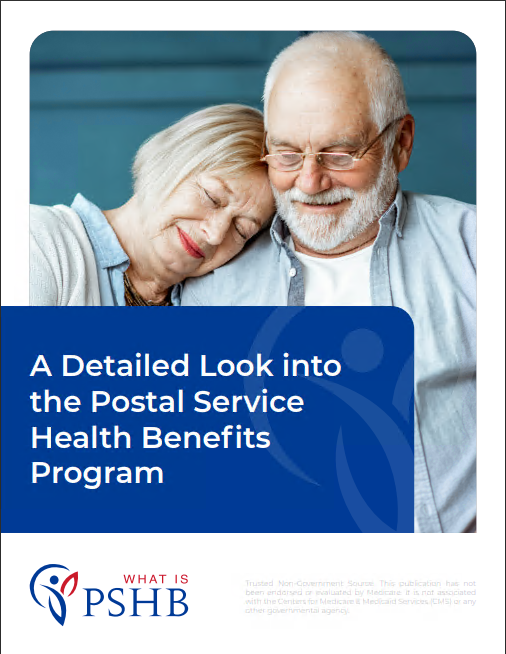Types of Coverage Available: Understanding Your Healthcare Options
Choosing the right healthcare coverage is a crucial decision for postal service employees and retirees. With various types of coverage available, understanding the differences, benefits, and eligibility criteria can help individuals make informed decisions about their healthcare needs. In this article, we’ll explore the different types of coverage available to postal professionals, including Federal Employees Health Benefits (FEHB), Postal Service Health Benefits (PSHB), Medicare, and other supplemental insurance options. By understanding the nuances of each type of coverage, postal employees can navigate their healthcare options effectively and ensure comprehensive coverage for themselves and their families.
Federal Employees Health Benefits (FEHB)
The Federal Employees Health Benefits (FEHB) program is the primary healthcare program for federal employees, retirees, and their eligible family members. FEHB offers various health insurance plans that various participating insurance carriers provide. Key features of FEHB coverage include:
Flexibility:
FEHB plans offer flexibility, allowing individuals to choose from various plan types, including fee-for-service (FFS) plans, health maintenance organizations (HMOs), preferred provider organizations (PPOs), and high-deductible health plans (HDHPs). This flexibility enables federal employees to select the coverage that best suits their healthcare needs and budgetary constraints.
Comprehensive Coverage:
FEHB plans provide comprehensive coverage for medical services, including hospital stays, doctor visits, preventive care, prescription drugs, dental, vision, and mental health services. With a wide range of benefits, FEHB ensures that federal employees and retirees have access to essential healthcare services.
Employer Contribution:
Federal agencies, including the United States Postal Service (USPS), contribute to the cost of FEHB premiums for their employees. This employer contribution helps offset the cost of healthcare coverage for federal employees and retirees, making FEHB plans more affordable.
Postal Service Health Benefits (PSHB)
The Postal Service Health Benefits (PSHB) program is specifically designed for postal service employees and retirees, offering healthcare coverage tailored to their unique needs. Key features of PSHB coverage include:
Tailored Benefits:
PSHB plans are tailored to address the specific healthcare needs of postal professionals, including medical, dental, vision, and prescription drug coverage. These plans may offer additional benefits or plan options designed to meet the demands of postal service work.
USPS Administration:
PSHB plans are administered by the United States Postal Service (USPS), ensuring seamless coordination and support for postal employees and retirees. USPS plays a direct role in managing PSHB coverage, enrollment, and customer service for postal professionals.
Retiree Benefits:
PSHB coverage extends to postal service retirees, providing continued access to healthcare benefits during retirement. Retirees may choose from various PSHB plans to meet their healthcare needs and maintain coverage beyond their postal careers.
Medicare
Medicare is a federal health insurance program that provides coverage for individuals aged 65 and older, as well as certain younger individuals with disabilities or specific medical conditions. Key features of Medicare coverage include:
Parts of Medicare:
Medicare consists of several parts, each covering different aspects of healthcare services. These parts include Medicare Part A (hospital insurance), Part B (medical insurance), Part C (Medicare Advantage), and Part D (prescription drug coverage).
Eligibility:
Most individuals become eligible for Medicare at age 65, regardless of their employment status or enrollment in other health insurance programs. Individuals under the age of 65 may also qualify for Medicare if they have a qualifying disability or medical condition.
Coordination with Other Coverage:
Many postal service employees and retirees may have access to both Medicare and FEHB or PSHB coverage. Understanding how Medicare coordinates with other coverage options is essential for maximizing benefits and minimizing out-of-pocket expenses.
Supplemental Insurance Options
In addition to FEHB, PSHB, and Medicare, postal service employees and retirees may have access to supplemental insurance options to enhance their healthcare coverage. These supplemental insurance options may include:
Medigap plans, also known as Medicare Supplement plans, help fill the gaps in Medicare coverage by paying for certain out-of-pocket costs, such as deductibles, coinsurance, and co-payments.
Dental and Vision Plans:
Supplemental dental and vision plans provide additional coverage for dental care, vision exams, eyeglasses, contact lenses, and other vision-related expenses not covered by primary health insurance.
Long-Term Care Insurance:
Long-term care insurance helps cover the cost of long-term care services, such as nursing home care, assisted living facilities, and in-home care, which are not typically covered by Medicare or other health insurance plans.
Conclusion
Understanding the different types of coverage available to postal service employees and retirees is essential for making informed decisions about healthcare. Whether considering FEHB, PSHB, Medicare, or supplemental insurance options, postal professionals can ensure comprehensive coverage to meet their healthcare needs throughout their careers and into retirement.
Ready to explore your healthcare options? Learn more about FEHB, PSHB, Medicare, and supplemental insurance plans to make the best choices for your healthcare coverage as a postal service employee or retiree.
Stay tuned for more informative content on retirement planning and healthcare benefits for postal service employees.
Featured Articles
As seniors navigate the healthcare landscape,
As seniors navigate the healthcare landscape,
As seniors navigate the healthcare landscape,
Licensed agents are available to help you find the best Medicare plan for you.
Working with a licensed agent can simplify your PSHB & Medicare experience.
Feedback For What Is PSHB
Let us know what you think!








